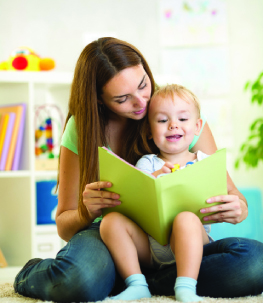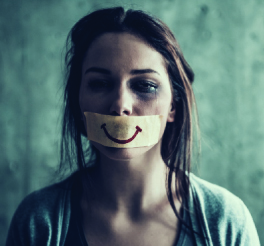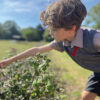
by Sophy Henn
Children’s author
It was reading picture books to my daughter that made me want to create my own. I was in awe of their power to excite, inform, empower and soothe, to convey quite complex messages and emotions in a way that both my daughter and I could relate to, all whilst keeping us entertained. Picture books can be such a brilliant way to start conversations of all sorts – picky eating, feeling good about yourself or even bad moods.
Being little is awesome, obviously, but it can also be quite tough too. There is just so much new stuff all the time! New situations, new people, new emotions, it’s just relentless. And all of these new situations require new responses, there’s so much to work out and then learn from our mistakes. Exhausting! And don’t get me started on the hormones (who knew they started so early? Well, science apparently) and the rollercoaster they take everyone on. Phew. So it’s no wonder all these feelings can sometimes be a lot.
I remember the first time my daughter had a proper shouty meltdown. When it subsided we all stood there shocked and stunned, but I don’t think any of us were as shocked as her. And that is why I believe that reading about these ‘moments’ and emotions is such a great thing. Watching other characters go through these situations affords everyone some perspective, the chance to have a chat about things in a calm way and maybe even have a chuckle about it all.
So after much wrangling, here are my top five books about those BIG EMOTIONS for little people. Enjoy them as a wonderful story or maybe use them to start a conversation, whatever you do I hope you love them as much as I do.
Where the Wild Things Are
by Maurice Sendak
One of my all time favourites. I adore how Max’s mood transports him to the place he needs to go to in order to exorcise his bad mood. After proving himself the wildest of the wild things, Max realises his wild feeling has now gone and been replaced by not such a nice one – loneliness. So he returns home. Sendak perfectly captures that rollercoaster of emotion a bad mood can take you on. Let the wild rumpus begin!
Barbara Throws a Wobbler
by Nadia Shireen
Nadia Shireen, has made Wobblers a physical presence in her wonderful, brand new picture book. I love how you can see Barbara literally wrestle with her bad mood and watch it shrink before her very eyes, once she alters her behaviour. A valuable message for us all! I think children will really respond to seeing a bad mood as an actual character, helping them realise they own the mood not the other way round. And who doesn’t love the word wobbler?
Grumpy Frog
by Ed Vere
Borne out of frustration with all the intolerant voices that seem to shout so loudly at the moment, Ed Vere created Grumpy Frog, who disputes this label by declaring he is actually very happy, but only so long as everything is going his way. When other ideas, suggestions and even colours impinge on his day, things start to get grumpy. But then Grumpy Frog meets a lovely green crocodile! What could go wrong? A great book to start discussions about compromise and empathy.
My No, No, No Day
by Rebecca Patterson
An absolute classic that I have only just discovered. This book takes us on the journey of Bella’s No, No ,No Day. Things start off wrong for no particular reason, and only get worse, right up until bedtime. But then Bella acknowledges her bad day to mummy, and they both hope for a better one tomorrow. A truly relatable story, grounded very much in the everyday but with such a great use of language (ballet is described as ‘too itchy’ – genius!) and such hilarious illustrations it can’t help but make you smile through Bella’s bad mood.
T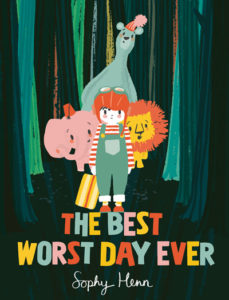 he Best Worst Day Ever
he Best Worst Day Ever
by me!
The idea for this book came from my childhood. When I was little and having a ‘moment’, when things all got ‘a bit much’, I would go for a big, dramatic exit and ‘runaway’. This involved me running to the end of the (not very big at all) garden and hiding behind the shed, convinced everyone would be desperate with worry and truly sorry for making me have a bad mood. I would wait for what felt like hours (probably only about five minutes) and then realise I was bored, probably hungry, felt a bit silly and wanted to go back inside. But after such an exit, such high emotion, it felt like there was rather a hurdle to overcome in order to ingratiate myself back into the house. And this is what happens to my main character Arthur, only his hurdle is a huge, dark forest that has sprung up between him and home during his post running-away pondering. As there is not time to go around it, Arthur must go through it and we follow Arthur’s journey as he meets some characters along the way who help him work through his bad mood, turning a stomp into wiggle, and a huff into a hoot.
I have loved creating this book and my hope it that it is not only enjoyed as a story in it’s own right, but might just gets kids and their grown-ups dancing away the grumps as well!
The Best Worst Day Ever by Sophy Henn is out now published by Simon & Schuster Children’s Books.

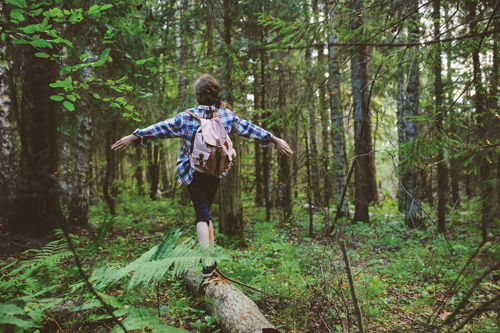
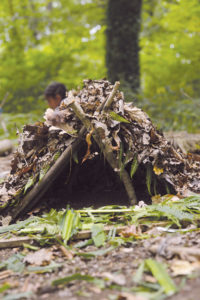 All that is needed is a bit of curiosity, a playful attitude and maybe a tiny bit of know-how. Paying attention to the ordinary and everyday that might have escaped our notice for years, can open the door to tiny adventures close to home. Outdoor play is not just a ‘nice to have’, it is essential for children to experience the world to learn about it and their place in it.
All that is needed is a bit of curiosity, a playful attitude and maybe a tiny bit of know-how. Paying attention to the ordinary and everyday that might have escaped our notice for years, can open the door to tiny adventures close to home. Outdoor play is not just a ‘nice to have’, it is essential for children to experience the world to learn about it and their place in it. Learning about our neighbour-hood nature connects us to where we live and makes us feel more at home. The more time spent outdoors, the more you notice the patterns of the changing seasons; get to know the sights, sounds and smells of your local wildlife; and enjoy ‘slow time’ as you lose yourself in the fascination of nature. Creativity, resilience and positive attitudes towards the environment and exercise are forged in outdoor play. Understandable fears of busy roads and encounters with strangers can make parents and carers feel anxious about letting their children and young people play out of sight but it is vital that all young people have opportunities for unstructured outdoor adventures.
Learning about our neighbour-hood nature connects us to where we live and makes us feel more at home. The more time spent outdoors, the more you notice the patterns of the changing seasons; get to know the sights, sounds and smells of your local wildlife; and enjoy ‘slow time’ as you lose yourself in the fascination of nature. Creativity, resilience and positive attitudes towards the environment and exercise are forged in outdoor play. Understandable fears of busy roads and encounters with strangers can make parents and carers feel anxious about letting their children and young people play out of sight but it is vital that all young people have opportunities for unstructured outdoor adventures. On your wild days out, it is very important to remember that the world is not a playground for humans but the habitat for us and all other living things. At the very least, we should try and leave as little trace of our activities as possible. It would be fantastic if we could leave things in an even better state than we found them and to have a positive impact on our environment.
On your wild days out, it is very important to remember that the world is not a playground for humans but the habitat for us and all other living things. At the very least, we should try and leave as little trace of our activities as possible. It would be fantastic if we could leave things in an even better state than we found them and to have a positive impact on our environment.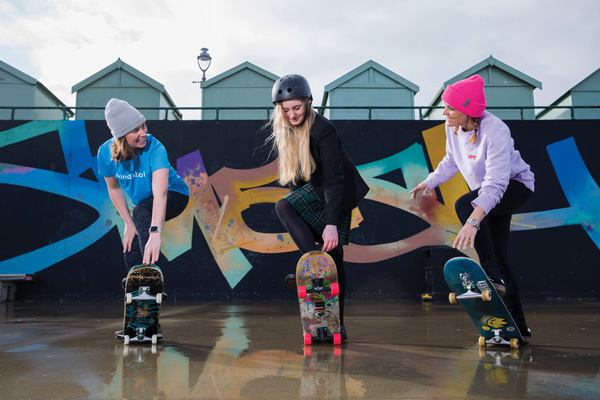

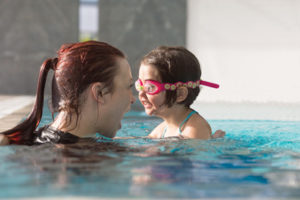 3. Swimming is a mood booster
3. Swimming is a mood booster 4. Swimming can make your child smarter
4. Swimming can make your child smarter